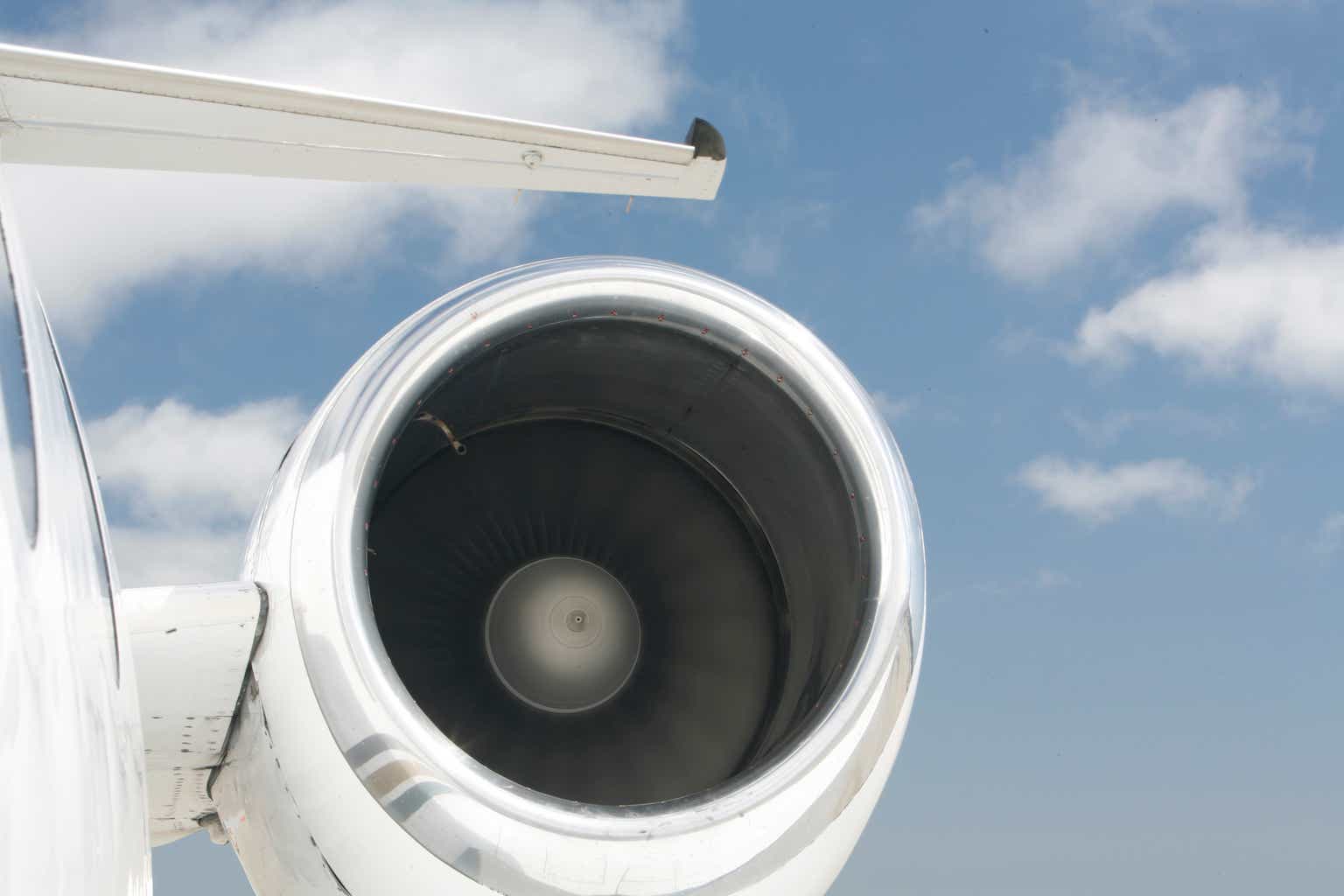Writing about Melrose PLC (OTCPK:MLSPF) (MRO.L) late in 2023, one of my main concerns about this relatively new aerospace pureplay was the risk that the Street had more or less priced in the emergent commercial aerospace cycle and would move on to the next hot theme.
I can’t say that alone explains why Melrose has been a more modest performer since that last article (up about 10%), particularly when General Electric (GE), Safran (OTCPK:SAFRY), MTU Aero Engines (OTCPK:MTUAF)(OTCPK:MTUAY)(MTX.DE), and RTX (RTX) shares have outperformed Melrose, but there also haven’t been any fundamental developments that would seem to fully explain the discrepancy.
I do still have some concerns that commercial aerospace is a played-out story, but Melrose shares look around 15% undervalued today and the company remains well-leveraged to growth in high-profit aftermarket business as well as ongoing internal efforts to improve the profitability of the Structures business.
Ongoing Turbulence In Plane Deliveries Isn’t Necessarily Bad For Melrose
Over the six months since my last update on Melrose there hasn’t been a lot in the way of goods for the two largest commercial aerospace players (Airbus (OTCPK:EADSY) and Boeing (BA)), as both companies continue to run into supplier issues that have impacted production schedules.
Boeing in particular has seen its production schedule become murkier as the company has had to deal not only with supplier issues (largely 737 fuselages from Spirit AeroSystems (SPR)) but also well-publicized quality issues that have led to the FAA capping monthly production. At this point, though, I think the FAA cap is largely a moot issue, as I don’t think the company could produce more than the 38/month limit given those other challenges. With that, sell-side expectations for deliveries have declined, and it may well take two years to get to a production rate of 50/month.
Looking at Airbus, the supplier issues seem more diffuse, though the issue with the RTX GTF engine for the A320neo is still in play. As a reminder, RTX announced in 2023 that it had identified “anomalies” in high-pressure turbine disks for its PW1100G engine related to its powered metals division and would have to fix over 600 engines. Thus far it looks as though cost estimates for this issue have stayed inline with estimates (Melrose is on the hook for about 4%, or around $260M, due to its share of the risk and revenue sharing partnership (or RRSP)) and RTX has already passed the peak in terms of grounded aircraft.
While none of this sounds particularly good, if anything it’s likely a net positive for Melrose. A slower, extended production schedule means fewer new planes going into service. That, in turn, means more flight hours and more maintenance for existing fleets, and to that end, I’ve seen GE estimate an incremental 200 shop visits in 2024 because of a slower pace of retirements in the existing fleet. Companies like Melrose typically enjoy far greater margins on their aftermarket business – in fact, it’s entirely common for OEMs like Airbus and Boeing to force suppliers to accept low (if not negative) margins on OE business since everybody knows the companies will make it back over the 20-40-year service lives of the aircraft.
Healthier Flight Activity, Improving Margins, And Opportunities For Further Improvement
While I haven’t been able to find good up-to-date data on global flight hours (which is a better metric for how much wear and tear aircraft engines are seeing), global passenger miles continue to improve, with April 2024 revenue passenger miles up 11% year over year. Air travel isn’t much above pre-pandemic levels at this point and has flattened out in recent months, but it is back above that highwater mark.
Melrose’s recent trading update (basically revenue figures for the first quarter of 2024) was fairly positive, with overall revenue up 8%. Engine revenue was up 21%, with low double-digit growth from both Airbus and Boeing (up 12% and 13%, respectively) highlighting the benefits of increased aftermarket activity, as well as growth in regional and business jets. Structures revenue was flat, held back by both the company’s decision to exit non-core lines of business (which will help margins over the long term) as well as customer destocking in the face of rising inventories driven by supplier issues (in other words, the “problem children” among the suppliers are causing issues for suppliers like Melrose as OEMs can only produce at the pace of the weakest suppliers).
Given these trends, I expect healthy results when the company reports first half earnings in August – unfortunately not only does Melrose report only semiannually, but relatively late at that. Engine margins improved from the first half of 2023 to the second half (27.5% versus 24.5%), and management’s guidance for 28% for 2024 may prove a bit too conservative. Meanwhile, margins in the Structures business improved from 2.5% (1H’23) to 7.4% (2H’23), and management is targeting 7% in 2024 and 9% in 2025, with 2024 likely held back by those business exits and destocking pressures. I continue to believe that Engines margins can exceed 30% as the cycle matures, while Structures margins should get into the low double-digits over time.
As far as opportunities to improve go, management has been focused on improving the business (Structures in particular) through “blocking and tackling” operational improvements, but I think there’s more that can be done over time. Melrose is involved with both RTX and GE for next-gen engines (with significant fuel economy and emissions improvements) and the company’s additive fabrication technology (which uses a combination of welding and additive manufacturing to produce lighter, more complex parts with less scrap) is only just starting to scale up.
The Outlook
Barring a serious global economic downturn, I’m not really worried about the ongoing recovery in air travel and the corresponding lift that will give to maintenance activity and aftermarket sales at Melrose. I’d also note that the supply of future aftermarket opportunities is still strong – while production schedules have slid to the right at both Airbus and Boeing, both companies have long backlogs (eight years for the 737MAX and nine years for the A320) and Melrose remains a key embedded supplier with engine components on roughly 90% of all civil aircraft flying today.
I’m still expecting more than 7% annualized revenue growth from Melrose as the air travel recovers and the large OEMs deliver on their backlogs. I’m likewise still expecting EBITDA margin improvement toward the 20%’s and free cash flow margins in the mid-to-high teens as the company leverages the exceptional profitability of the Engines business. With minimal apparent appetite for M&A, much of that incremental cash flow should go to shareholders in the form of buybacks and dividends.
Between discounted cash flow and a margin/return-driven EV/EBITDA approach (with a 13.5x multiple), I believe Melrose shares are around 15% undervalued for the next six to 12 months.
The Bottom Line
I don’t have a good answer as to why Melrose has underperformed some of its aerospace propulsion peers. Perhaps the market wants pure-play options, or perhaps their valuing GE’s exceptional leverage as a pure-play aerospace propulsion company. Whatever the case may be, I don’t see evidence that Melrose management has dropped the ball or underperformed, even with the near-term challenges in the Structures business. Aerospace isn’t one of my favored spaces anymore (like I said, I think the Street is moving on to other ideas), but I do still see enough value in Melrose to make it worth a look.
Editor’s Note: This article discusses one or more securities that do not trade on a major U.S. exchange. Please be aware of the risks associated with these stocks.
Read the full article here







